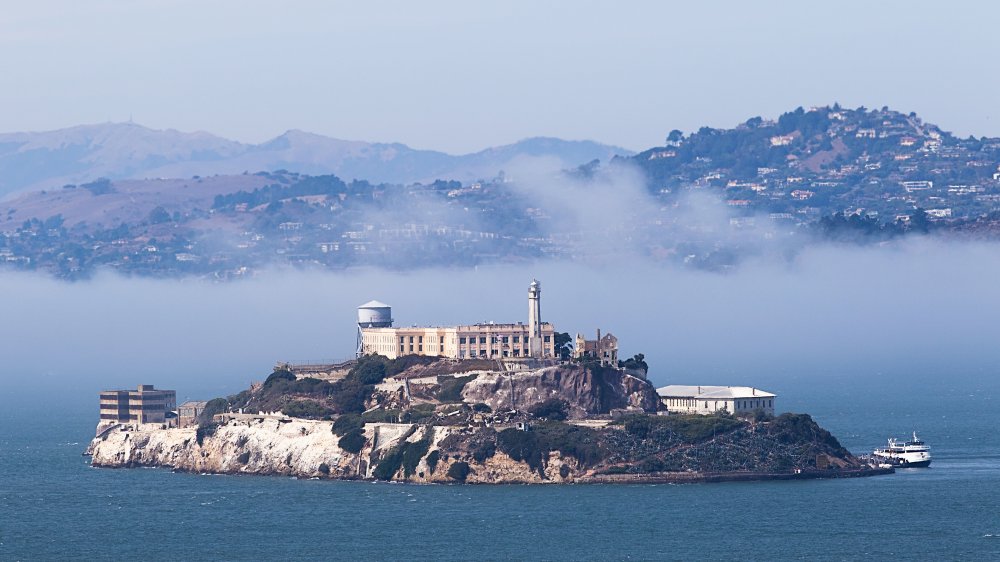The Truth About The Only Successful Escape From Alcatraz
You've probably asked yourself, "How the heck did they come up with the name Alcatraz?" Or maybe, "Sure, it was an island prison, but people are clever and I bet a bunch of prisoners got away." First things first. Juan Manuel de Ayala, a Spanish explorer, was the first European to chart what eventually became San Francisco Bay. According to the Federal Bureau of Prisons, in 1775 Ayala christened one of the rocky islands therein "Alcatraces," which eventually became "Alcatraz." It might have something to do with pelicans. Or not.
Naming rights aside, the island's location made it an ideal spot for a fort to protect the port city. Plans for an 1850 installation called for as many as 100 cannons, making it very fortified indeed. The island also featured the first lighthouse on the West Coast. By the late 1850s it was housing military prisoners, and became a full-time prison in 1911. The military transferred ownership to the Department of Justice for use by the Federal Bureau of Prisons in 1933. It became a maximum-security, minimum-privilege penitentiary, housing such notables as Al Capone and Machine-Gun Kelly, but mostly prisoners who refused to conform in other prison settings. It usually took about five years before a prisoner learned to behave himself and was transferred, probably gratefully, to a prison on the mainland.
They were not free as birds
The location of the prison, in the middle of the bay, made escape problematic, at best. There was limited transportation to or from. Prisoners were closely watched at all times, much more than in other prison settings. Even if someone got over a wall, there was the water barrier: cold Pacific currents would sap strength and potentially drag an escapee out to sea before he could cross the 1.25 miles to San Francisco, providing he didn't drown. (There were rumors of sharks, but that's a myth.)
None of that stopped people from trying. According to the Bureau of Prisons, Alcatraz as federal penitentiary saw 14 escape attempts, starting in 1936, when Joe Bowers tried to climb a chain link fence. He was shot, fell 50 feet, and died from his injuries. Several others were shot; a couple were swept out to sea, missing and presumed drowned. Some only got as far as the shoreline before they were apprehended and returned to incarceration. The last attempted break was in 1962 — they were caught — but an earlier attempt that same year is a little more mysterious.
If you know anything, the United States Marshals Service might be interested
As History tells us, three inmates — convicted bank robbers Frank Morris and John and Clarence Anglin — disappeared on a home-made raft. Oars and a life vest were found, but no bodies, waterlogged or otherwise. The FBI closed the case in 1979. And then in January 2018, CBS News published details of a letter, purportedly written by John Anglin in 2013 and sent to the FBI, asking for medical care — "I'm 83 years old and in bad shape. I have cancer" — and a promise of a light sentence if he turned himself in. The writer claimed all three men made it, "but barely," and he was the last one alive. The letter was analyzed but kept secret as part of the investigation. Analysis was "inconclusive." The Washington Post relates that the U.S. Marshals Service doubts the authenticity of the letter, but will keep the file open until the men are caught, their deaths confirmed, or the suspects turn 99 years old. Stay tuned.


